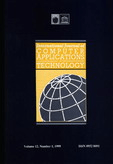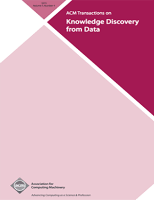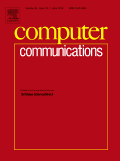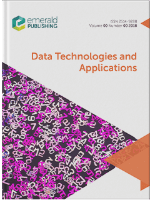
Social Network Analysis and Mining
Scope & Guideline
Exploring the Depths of Digital Interactions
Introduction
Aims and Scopes
- Social Network Analysis (SNA):
The journal extensively covers methodologies and models for analyzing social networks, including the study of node relationships, community detection, and influence propagation within networks. - Data Mining Techniques:
Methods of data mining are applied to extract meaningful patterns and insights from social media data, including sentiment analysis, rumor detection, and engagement prediction. - Machine Learning Applications:
Research often integrates machine learning techniques to enhance the accuracy of predictions and classifications within social networks, focusing on areas such as sentiment analysis, hate speech detection, and influence maximization. - Behavioral Studies:
The journal explores user behavior in various contexts, including emotional dynamics, mental health, and responses to misinformation, highlighting the social implications of network interactions. - Interdisciplinary Approaches:
The journal encourages interdisciplinary research that combines insights from computer science, social sciences, and public health, facilitating a comprehensive understanding of social phenomena.
Trending and Emerging
- Misinformation and Fake News Detection:
With the rise of misinformation on social media platforms, there is a significant increase in research dedicated to detecting and mitigating fake news, employing advanced machine learning and natural language processing techniques. - Health-Related Social Media Analysis:
Recent publications focus on analyzing health-related discussions, particularly concerning mental health and public health crises like COVID-19, utilizing social media data to understand public sentiment and behavioral patterns. - Multimodal Data Integration:
There is a growing trend towards integrating various data types (text, images, videos) for comprehensive analysis in social networks, enhancing the understanding of user interactions and content dissemination. - Dynamic and Temporal Network Analysis:
Research is increasingly focusing on dynamic and temporal aspects of networks, studying how relationships and influences evolve over time, which is critical for modeling real-world social interactions. - Ethical and Social Implications of Social Networks:
Emerging studies address the ethical implications of social network analysis, exploring issues like privacy, data security, and the societal impact of technology on user behavior.
Declining or Waning
- Traditional Graph Theory:
Although foundational, traditional graph-theoretical approaches are increasingly being overshadowed by more complex models that integrate dynamic, multilayer, or temporal networks, reflecting a shift towards capturing the intricacies of real-world interactions. - Simple Sentiment Analysis:
Basic sentiment analysis techniques are becoming less prevalent as researchers move towards more sophisticated models, such as those incorporating deep learning or multimodal data, which yield richer insights into social sentiments. - Static Network Analysis:
Research focusing solely on static network structures is declining as the field shifts towards dynamic network analysis that considers the evolution of connections and interactions over time. - Generalized Social Media Studies:
Broad studies on social media usage without specific focus are less common, as there is a growing trend towards targeted investigations that explore particular issues such as misinformation, hate speech, or user engagement in specific contexts.
Similar Journals

SOCIAL SCIENCE COMPUTER REVIEW
Navigating the digital landscape of social science inquiry.SOCIAL SCIENCE COMPUTER REVIEW, published by SAGE Publications Inc, is a premier peer-reviewed journal that has been contributing to the intersection of technology and social science since its inception in 1983. With an impressive H-index and categorized in Q1 across multiple disciplines including Computer Science Applications, Law, Library and Information Sciences, and Social Sciences (miscellaneous), this journal stands out as a critical resource for researchers, professionals, and students seeking to explore the implications of computational methods in societal contexts. The journal is widely recognized for its rigorous scholarship, evidenced by its high Scopus ranks in various categories, notably ranking #17 in Social Sciences - Law (98th percentile) and #9 in General Social Sciences (96th percentile), making it an essential publication for those looking to stay at the forefront of social science research. Though it does not provide open access, the journal's commitment to disseminating cutting-edge research ensures its vital role in advancing knowledge and fostering interdisciplinary collaboration. For those engaged in studying and applying computational techniques within the social sciences, SOCIAL SCIENCE COMPUTER REVIEW is a valuable and indispensable source.

INTERNATIONAL JOURNAL OF COMPUTER APPLICATIONS IN TECHNOLOGY
Unlocking the potential of computer applications across diverse domains.International Journal of Computer Applications in Technology is a reputable academic journal published by InderScience Enterprises Ltd, dedicated to advancing the field of computer applications across various domains including Computer Networks and Communications, Computer Science Applications, and more. With an ISSN of 0952-8091 and an E-ISSN of 1741-5047, this journal has been a credible source of research since its inception in 1976, transitioning into its current form in 1988. With its consistent rank in the Q3 quartile for several key engineering and computer science categories in 2023, it highlights the significance of the journal and its contributions to ongoing discourse in these fields. Researchers benefit from its wide-ranging scope, which encompasses both theoretical and practical applications of technology, making it an invaluable resource for both industry professionals and academic scholars. Although it currently does not provide open access, the journal remains committed to disseminating high-quality research that is essential for technological advancement and innovation.

WORLD WIDE WEB-INTERNET AND WEB INFORMATION SYSTEMS
Innovating the Future of Web ResearchWORLD WIDE WEB - INTERNET AND WEB INFORMATION SYSTEMS, published by Springer, is a leading academic journal that focuses on the cutting-edge areas of Internet technologies and web-based information systems. With an esteemed ISSN of 1386-145X and an E-ISSN of 1573-1413, this journal has been a significant contributor to the fields of Computer Networks and Communications, Hardware and Architecture, and Software since its inception in 1998. The journal consistently ranks in the Q1 category across these fields, reflecting its high impact and relevance, evidenced by its impressive Scopus rankings where it stands in the upper percentiles (79th for Computer Networks and Communications, 77th for Hardware and Architecture, and 75th for Software). Researchers, professionals, and students looking to stay at the forefront of web information systems will find a wealth of valuable resources and innovative research compellingly presented in this journal, available for publication until 2024.

ACM Transactions on Knowledge Discovery from Data
Unlocking Insights, Transforming Data into KnowledgeACM Transactions on Knowledge Discovery from Data (TKDD), published by the Association for Computing Machinery, is a prestigious journal at the forefront of the interdisciplinary realm of data mining and knowledge discovery. With an impressive Q1 ranking in Computer Science and a Scopus rank of #43 out of 232, this journal stands out as a top-tier resource for innovative research that addresses complex challenges in data science. Covering impactful studies from 2007 to 2024, TKDD presents cutting-edge algorithms, methodologies, and applications that shape the future of knowledge extraction from vast datasets. While not an open-access journal, it provides a platform for researchers, professionals, and students to disseminate their findings and engage with the latest advancements in this rapidly evolving field. By fostering collaboration and knowledge sharing, TKDD plays a vital role in advancing the understanding and application of data analysis techniques, making it an essential read for anyone involved in the pursuit of knowledge from data.

COMPUTER COMMUNICATIONS
Driving Excellence in Networking ResearchCOMPUTER COMMUNICATIONS is a premier journal published by Elsevier, covering cutting-edge research in the field of computer networks and communications. With an impressive 2023 Scopus ranking placing it in the 95th percentile and classified as Q1 in its category, this journal embodies the forefront of technological advancement and scholarly excellence. Since its inception in 1978 and poised to continue until 2024, COMPUTER COMMUNICATIONS serves as an essential platform for disseminating high-impact research that advances our understanding of computer networking protocols, architectures, and applications. Although it is not an open-access publication, the journal provides various access options to ensure that its findings are widely circulated among researchers, professionals, and students. Through rigorous peer review and a commitment to fostering innovation, COMPUTER COMMUNICATIONS plays a vital role in shaping the future of communication technologies.

Big Data Mining and Analytics
Catalyzing Interdisciplinary Collaboration in AnalyticsBig Data Mining and Analytics, published by TSINGHUA UNIVERSITY PRESS, stands at the forefront of interdisciplinary research in the fields of Artificial Intelligence, Computer Networks and Communications, Computer Science Applications, and Information Systems. With an impressive Q1 ranking in multiple categories as of 2023, this journal serves as a critical platform for researchers and professionals eager to explore innovative techniques and methodologies related to big data analytics. Since its transition to Open Access in 2018, Big Data Mining and Analytics has aimed to increase the visibility and accessibility of its cutting-edge research, making permanent strides in the global academic landscape. Housed in Beijing, China, and actively embracing the converged years from 2018 to 2024, the journal aims to cultivate a rich discourse on emerging trends and applications, ensuring its relevance in a rapidly evolving technological environment. Join a vibrant community of scholars dedicated to advancing the frontiers of knowledge in big data.

EPJ Data Science
Fostering Collaboration in Computational MathematicsEPJ Data Science is a prominent open-access journal affiliated with SPRINGER, dedicated to disseminating high-quality research in the fields of Computational Mathematics, Computer Science Applications, and Modeling and Simulation. Established in 2012, this journal provides a scholarly platform for innovative ideas and methodologies aimed at advancing data science, bridging gaps between theoretical foundations and practical applications. With impressive rankings, including Q1 in Modeling and Simulation and Q2 in both Computational Mathematics and Computer Science Applications as of 2023, EPJ Data Science is recognized for its significant contributions to academia, evidenced by its strong performance in Scopus rankings. The journal is committed to open access, ensuring that research is accessible to a global audience, thereby enhancing collaboration and interdisciplinary communication. Located at One New York Plaza, Suite 4600, New York, NY 10004, United States, it serves as a hub for researchers, professionals, and students eager to share and explore pioneering developments in data science.

Data Technologies and Applications
Empowering Decisions through Data ExplorationData Technologies and Applications is a leading academic journal published by Emerald Group Publishing Ltd, captivating the interest of researchers, professionals, and students alike within the dynamic fields of Information Systems and Library and Information Sciences. With its ISSN 2514-9288 and E-ISSN 2514-9318, this journal holds a commendable Q2 ranking in Library and Information Sciences and a Q3 ranking in Information Systems as of 2023, reflecting its impact and contribution to ongoing discourse in these disciplines. Operating with an open access model, it provides a platform for accessing high-quality research that encompasses innovative methodologies and applications of data technologies. The journal's scope includes interdisciplinary studies that leverage data to enhance decision-making, improve information retrieval, and foster technological convergence. Housed in the United Kingdom, the journal facilitated its first publication in 2018, with a commitment to fostering valuable academic conversations through to 2024 and beyond. Engage with insightful research that shapes the future of data technologies and applications, making this journal an essential resource for anyone invested in the advancement of knowledge in these pivotal fields.

International Journal of Advanced Computer Science and Applications
Connecting Scholars to Shape the Future of Computing.International Journal of Advanced Computer Science and Applications, published by SCIENCE & INFORMATION SAI ORGANIZATION LTD, stands as a significant platform in the ever-evolving field of computer science. With its ISSN 2158-107X and E-ISSN 2156-5570, the journal aims to disseminate high-quality research and innovations from diverse areas within computer science, embracing cutting-edge technologies and methodologies. As of 2023, it holds a commendable Q3 ranking in the field, placing it among a competitive cohort of journals while showcasing its commitment to scholarly excellence. The journal operates under an open access model, ensuring that its content is widely accessible to researchers, professionals, and students alike, thereby fostering a collaborative environment for knowledge-sharing and advancing the discipline. With a history of converged contributions from 2017 to 2024, the International Journal of Advanced Computer Science and Applications serves as a vital resource for those seeking to stay at the forefront of computer science research and applications.

Journal of Information and Communication Technology-Malaysia
Enhancing Accessibility to Pioneering ResearchJournal of Information and Communication Technology-Malaysia is a respected open-access journal published by UNIV UTARA MALAYSIA PRESS, dedicated to advancing knowledge in the fields of Information Technology, Computer Science, and Mathematics. With an ISSN of 1675-414X and an E-ISSN of 2180-3862, this journal has been providing a platform for innovative research since its establishment in 2009. The journal is indexed in Scopus with commendable rankings in Mathematics and Computer Science categories, highlighting its contribution to the academic community, particularly with its Q3 quartile status in both fields as of 2023. As it converges research from 2011 to 2024, the journal invites submissions that explore contemporary challenges and technological advancements, catering to a global audience of researchers, professionals, and students interested in the rapidly evolving domains of ICT. By ensuring open access to its articles, the journal promotes widespread dissemination and accessibility of cutting-edge research, thereby supporting the collaborative development of ideas and solutions in these critical areas.